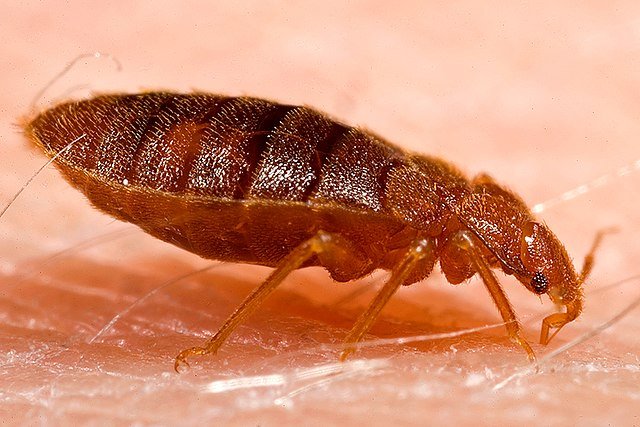How big does bed bugs g et?
et?
When people hear "bed bugs," their first reaction is usually fear, disgust, or panic. One of the most common questions we get is: how big does bed bugs get? Knowing what size to expect can help you identify them easier before the small problem turns to a serious infestation.
In this article, we’ll break down how big bed bugs get at each stage of their life, what they look like, and how you can spot the bed bugs in bed before it’s too late.
What Are Bed Bugs, Really?
Bed bugs are tiny, flat insects that feed on human blood—usually while you sleeping. They don’t fly or jump, but they’re expert in hiding. While they’re not known to spread diseases, their bites can be itchy, irritating, and sometimes cause allergic reactions.
So, How Big Does Bed Bugs Get?
Let’s look at their size from baby (nymph) to adult:
🥚 Bed Bug Eggs
Size: 1 mm (like a grain of salt)
Color: White-yellow, oval-shaped, sticky
Hard to see with the naked eye
Often found in cracks, seams of mattresses, or behind the furniture.
🐣 Nymphs (Baby Bed Bugs)
Bed bugs go through 5 nymph stages before becoming adults. After each blood meal, they grow and shed their skin.
| Stage | Size (approx.) | Notes |
|---|---|---|
| 1st | 1.5 mm | Almost clear, nearly invisible |
| 2nd | 2 mm | Light tan color |
| 3rd | 2.5 mm | Easier to see after feeding |
| 4th | 3 mm | Reddish if full of blood |
| 5th | 4.5 mm | Looks like a tiny adult |
Each nymph stage takes a blood meal before growing. Without a meal, they don’t move to the next stage.
🪳 Adult Bed Bugs
Size: About 5–7 mm long (¼ inch)
Color: Reddish-brown
Shape: Flat and oval when unfed, swollen and longer when fed
About the size of an apple seed or like a lentil.
So, in short:
👉 Bed bugs start at 1 mm (egg) and grow up to 7 mm (adult).
How Big Are Bed Bugs After Feeding?
After feeding, bed bugs swell and stretch out. An adult that’s usually 5 mm can look almost twice its size after a full blood meal. Its color also turns a dark red, making it easier to spot.
Can You See Bed Bugs With the Naked Eye?
Yes, but it’s not always easy.
Eggs and small nymphs are hard to see unless you're looking closely with a flashlight.
Adults are visible and easy to identify, especially after feeding.
Tip: If you suspect bed bugs, look for:
Small reddish-brown and black spots on sheets (dried blood or feces)
Shed skins
Weird smell (stronger with heavy infestations)
Bites in a line or cluster in ones body
Where Do Bed Bugs Hide?
Why Bed Bug Size Matters
Understanding the size of bed bugs at every stage helps you:
Spot them early
Know what to look for after treatment
Avoid confusing them with other pests like fleas or carpet beetles
A small infestation might only have eggs and 1st-stage nymphs—almost invisible to most people. But within a few weeks, they can become adults and start laying hundreds of eggs.
Final Thoughts
So, how big does bed bugs get?
They grow from 1 mm eggs to 7 mm adults. The older they get—and the more they feed—the easier they are to spot. But by the time you notice them, the infestation might already be serious.
If you think you might have bed bugs in your home, don’t wait. Call a licensed pest control expert right away. The earlier you act, the easier (and cheaper) it is to get rid of them.
Bed Bugs Appearance and Life Cycle – U.S. EPA (https://www.epa.gov/bedbugs/bed-bugs-appearance-and-life-cycle)
About Bed Bugs – Centers for Disease Control and Prevention (CDC)](https://www.cdc.gov/bed-bugs/about/index.html)

 et?
et?